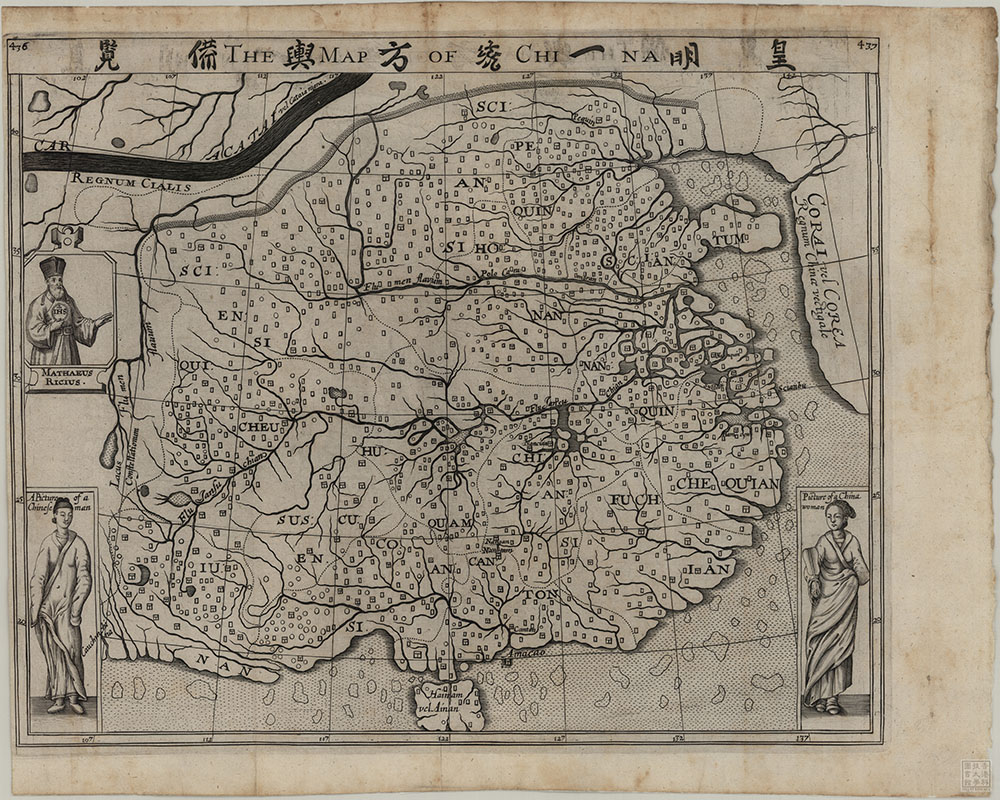Translations
Translation goes beyond transforming languages; it involves the transference of messages across various mediums, including text, visuals, and even gestures.
In this zone, visitors can observe different examples of geographic knowledge being transferred and transposed across various media. Some originated as text and were later visualized as maps, while one Chinese map was "translated" into its English version in all aspects except the language itself. Ancient stories and folklore about faraway lands may be represented on maps in the form of reinterpreted text or images, exemplified by some of the exhibits.
This conversion across media was an essential dynamic in the history of mapmaking, inviting visitors to reflect on the interpretation and reinterpretation of messages across time, languages, and forms.
![<i>Xvntien alias Qvinzay</i><br>[Xuntien, also known as Quinzay]](../img/4.02.jpg)
Xvntien alias Qvinzay
[Xuntien, also known as Quinzay]
![<i>Tabula Svperioris Indiae et Tartariæ Maioris</i><br>[A Map of Upper India and Greater Tartary]](../img/4.03.jpg)
Tabula Svperioris Indiae et Tartariæ Maioris
[A Map of Upper India and Greater Tartary]

The Map of China
![<i>China Regnum</i><br>[The Kingdom of China]](../img/4.10.jpg)